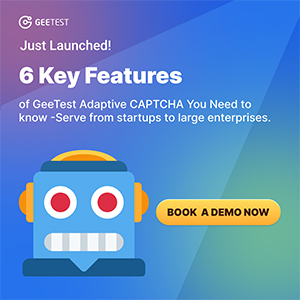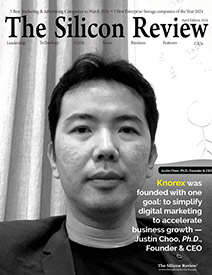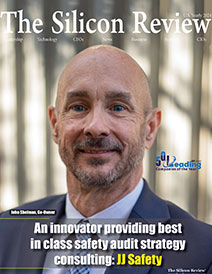30 Fastest Growing Private Companies To Watch 2018
Helping Healthcare Organizations Manage Risk With Proven Data Science And A Guided Approach To Simplify The Complex: HBI Solutions Inc.
The Silicon Review
![]() Karl Sylvester, a pediatric surgeon; Bruce Ling, a PhD data scientist; and Eric Widen, a seasoned healthcare IT business executive, worked together at Stanford University Medical Center in Palo Alto, California. The three shared a vision of improving health and reducing the cost of care. And in 2011, the trio founded HBI Solutions Inc.
Karl Sylvester, a pediatric surgeon; Bruce Ling, a PhD data scientist; and Eric Widen, a seasoned healthcare IT business executive, worked together at Stanford University Medical Center in Palo Alto, California. The three shared a vision of improving health and reducing the cost of care. And in 2011, the trio founded HBI Solutions Inc.
With the help of veteran health IT executive Frank Stearns, HBI built data models that could predict poor health outcomes before they happened, and then tested them in a variety of care settings and vetted them in multiple research studies.
Today, HBI Solutions is a strategic partner to healthcare organizations worldwide. The company delivers actionable information that helps providers reduce patient health risks, improve care quality, and lower the cost of care. The company serves healthcare organizations across the ecosystem from providers to payers and ACOs to HIEs. They all have different needs and work with a number of different technology vendors. That means serving them well requires collaboration with other companies equally passionate about improving population health.
What Sets HBI Solutions Apart
Words from the Chief Man: Eric Widen, CEO and Co-founder
Expertise
Our deep and varied healthcare experience ranges from patient care and academic research to data science and business operations.
Data science
Our advanced machine learning and expert feature engineering provide risk assignment, stratification, and highly accurate predictions for your most at-risk populations.
Guidance
We assess your needs, configure the right solution, and provide guidance to help you grow with confidence, continuously improve, and be successful as you manage more risk on your journey to value-based care.
Real-time insights
We aggregate and analyze data from a wide range of sources—including EMR, clinical, claims, laboratory, pharmacy, behavioral, sociological, genomic, and more—to deliver predictive analytics that meet your real-time needs.
The Class-Apart Solutions
The Spotlight Analytics Platform
Many healthcare analytics companies offer advanced algorithms that analyze healthcare data. But the data science at the heart of Spotlight was developed from the ground up specifically for healthcare applications. HBI’smodels are the most comprehensive on the market, and offer predictions that are highly accurate and actionable.
Any and all data: While many of HBI’s competitors rely only on medical claims data that’s often 30 to 90 days old, HBI starts with a comprehensive, up-to-date data set. It use real-time clinical, billing and claims information with built-in natural language processing (NLP) to capture additional clinical, social and behavioral information found in unstructured and non-discrete data types like discharge summaries, histories and physicals.
Machine learning as a service: Unlike other vendors that provide a single model tested on a specific data set, HBI takes the data you have—any and all data—to calibrate and optimize its proven models to the data you make available. Then the company recalibrates each year or whenever your data set changes to assure you’ve always got the best results for your populations.
Transparent: While others may provide only a simple risk score or stratification, HBI assigns an individual probability and expose risk features and weights to help clinicians understand what’s driving that risk. It also connects modifiable risk features to intervention recommendations and clinical profiles. This gives user’s confidence as they use HBI’spredictions to make better treatment decisions.
More risk models: Many competitors require multiple static algorithms (one for congestive heart failure patients, one for Medicare populations, etc.). But HBI’s algorithms work with all available data to deliver risk results for all ages, all diseases and all payer types. HBI offers over 30 dynamic condition, cost and event-based prediction models across acute, population and community care settings.
Proven: It has spent years proving its models using actual client clinical data, with practicing health providers, in real patient care situations. It has validated its models through peer-reviewed research and continuously improves them with feature engineering and machine learning processes.
Happy Clients
“HBI provides unique and powerful predictive models that incorporate real-time clinical and encounter data to support proactive care management. These are very sophisticated tools that incorporate information not traditionally used in this way. HBI stands out as a leader in the next generation of predictive modeling solutions.”
- Devore Culver Former Executive Director and CEO HealthInfoNet
“This tool is truly unique and powerful. I use it to monitor our performance on several key indicators and inform organizational planning. I can compare our readmission rate to the state average to understand where to concentrate efforts, or see our population’s future risks to decide if we need to build up or reduce service lines.”
- William Wood MD, Internist and VP, Medical Affairs St. Joseph Healthcare
Meet the Kingpin
Eric Widen, CEO and Co-founder: Eric Widen is a co-founder of HBI Solutions and has served as its CEO since the company’s 2011 inception. Eric has over 20 years of experience in the health information technology field.
Most recently, he led the Performance Improvement, Clinical Analytics, and Clinical Informatics programs at Lucile Packard Children’s Hospital, part of the Stanford University Medical Campus. Prior to that, he held leadership positions at Allscripts/Eclipsys and APM/CSC, a healthcare consultancy. Eric has also worked extensively as an independent consultant, advising clients on electronic medical record implementation and optimization strategies.
He holds a Master of Health Care Administration (MHA) from Clark University and a BS in Management Information Systems from Rensselaer Polytechnic Institute.
“Our solutions delivers real-time insights that help caregivers predict the risk of disease, cost, and future events such as hospital admissions, readmissions, and ED visits.”









